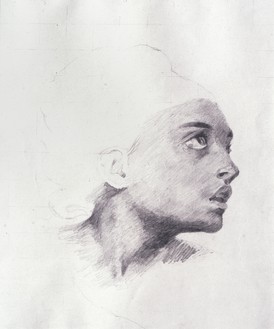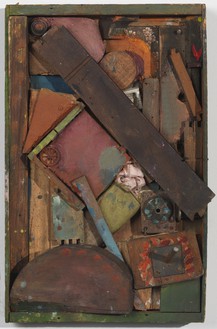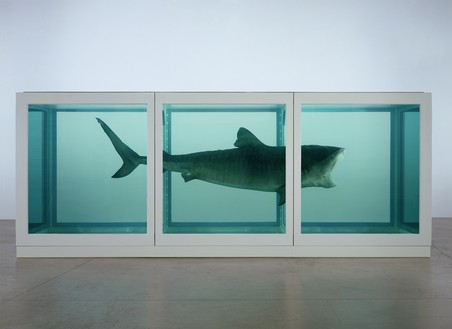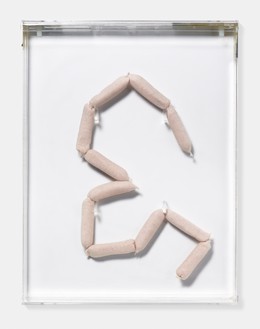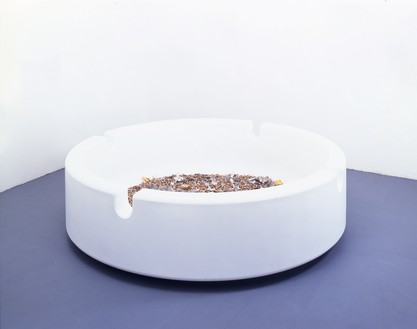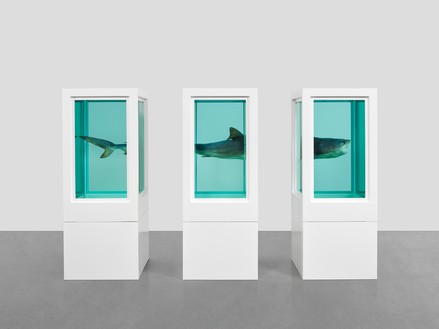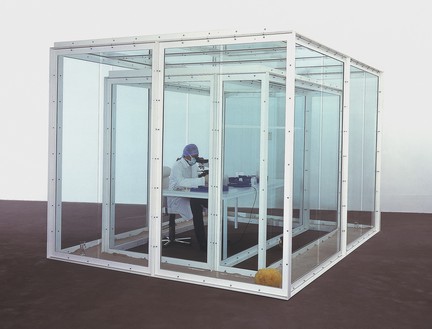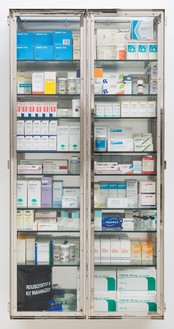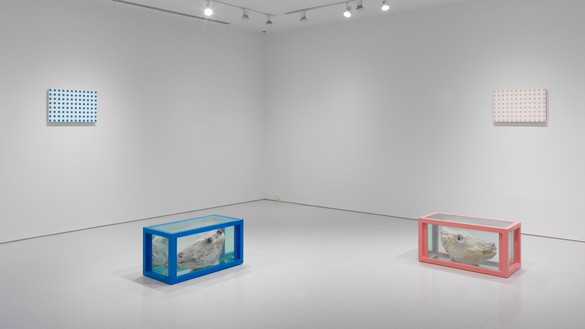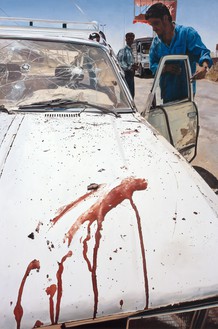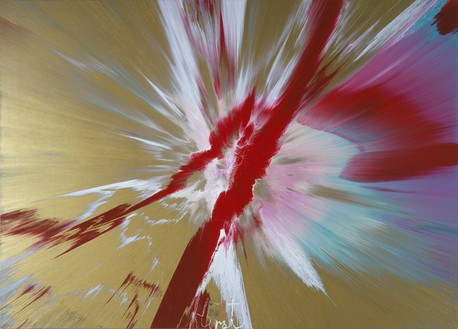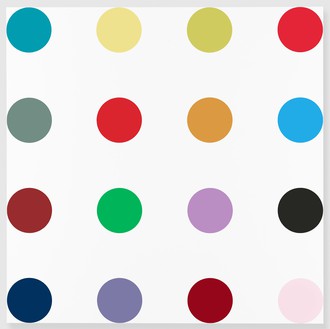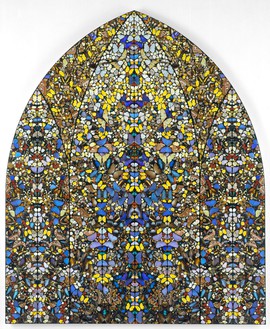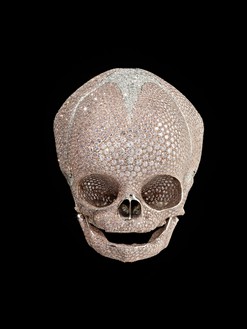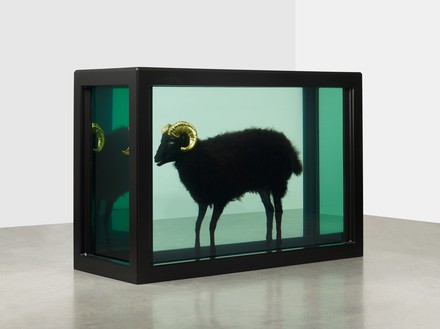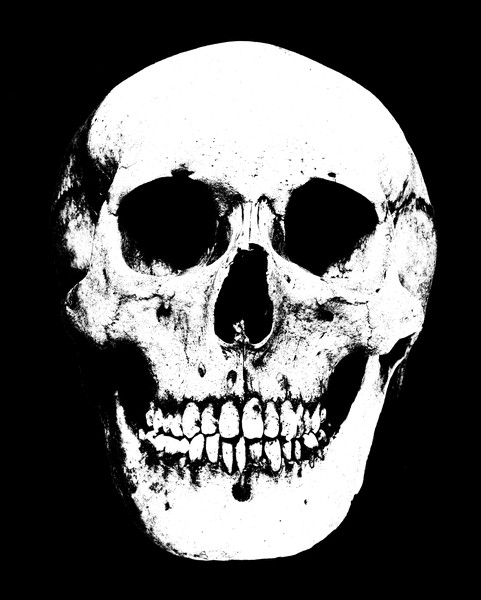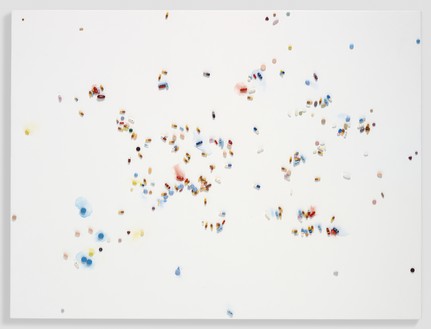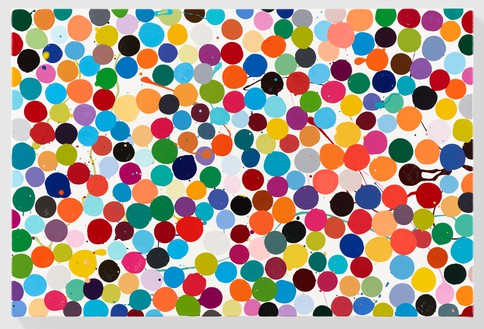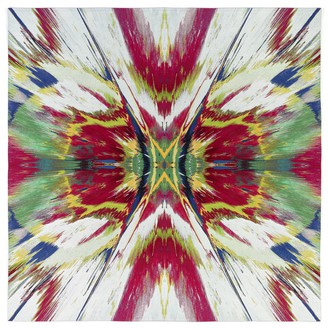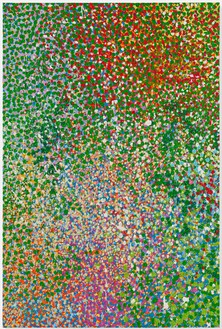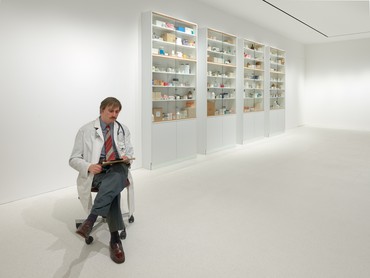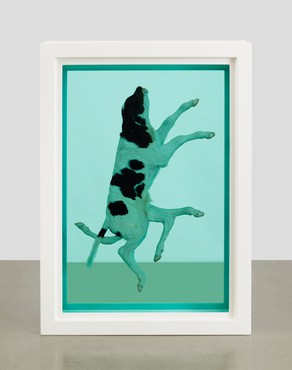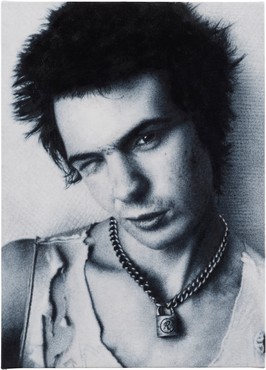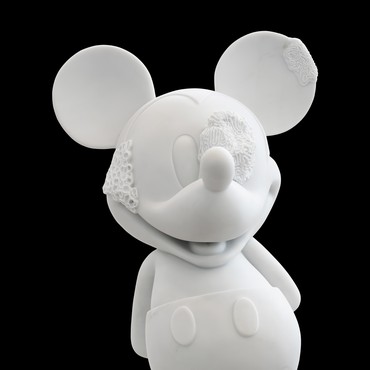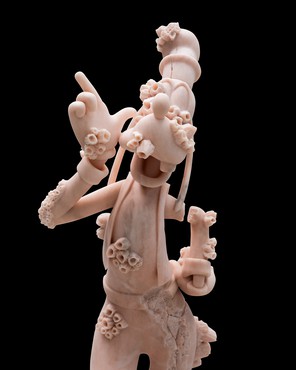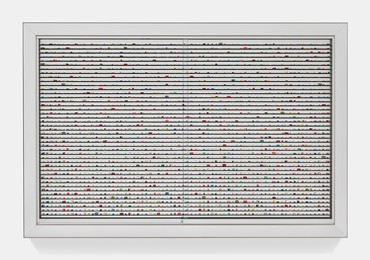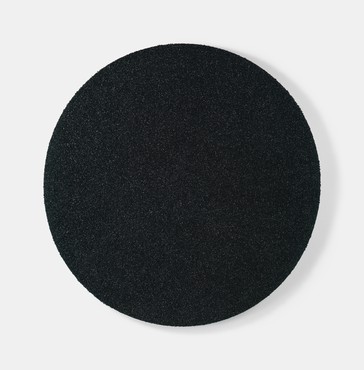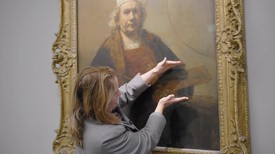About
People are afraid of change, so you create a kind of belief for them through repetition. It’s like breathing. I’ve always been drawn to series and pairs. A unique thing is quite a frightening object.
—Damien Hirst
Since emerging onto the international art scene in the late 1980s, Damien Hirst has created installations, sculptures, paintings, and drawings that examine the complex relationships between art and beauty, religion and science, and life and death. From serialized paintings of multicolored spots to animal specimens preserved in tanks of formaldehyde, his work challenges contemporary belief systems, tracing the uncertainties that lie at the heart of human experience.
In 1988, while studying at Goldsmiths College in London, Hirst curated Freeze, a rolling exhibition in three parts, featuring his work and that of fellow students. This show is considered the debut of the artists who would come to be known as the Young British Artists, or YBAs, whose approach was characterized by a combination of entrepreneurial and oppositional attitudes, the use of found materials, and an interest in shock and spectacle. In the final iteration of Freeze, Hirst included two of his Spot paintings, which he painted directly onto the wall. The Spot paintings (1986–), of which there are now more than one thousand, present multicolored spots on white or near-white grounds and are painted by hand in glossy house paint. With these works, Hirst sought to paint as a machine yet allow for the subtle imperfections of the artist’s hand. In 2012 Gagosian showed more than three hundred Spot paintings at once across all eleven of the gallery’s locations.
Like many of Hirst’s series, the Spot paintings evoke various psychological and perceptual dichotomies: they are both calming and unnerving, beautiful and ordinary. A subseries, the Pharmaceutical paintings (1986–2011), features evenly spaced, multicolored circles. The title links these works to the medicine cabinets (1988–2012) and Visual Candy paintings (1993–95), all of which consider the cultural role of prescription drugs, the ways they are advertised, and the many promises that are made to their consumers. The medicine cabinets are filled with the empty packaging of various medications, highlighting the minimalist aesthetic of the boxes and plastic containers. The Visual Candy paintings push the idea of false promises even further. Alluding to movements including Impressionism, Abstract Expressionism, and Pop art, they are exuberant, colorful paintings with euphoric, perhaps facetious, titles such as Happy Happy Happy (1994), Wowee Zowee (1993), and Super Silly Fun (1993).
In 1991 Hirst created The Physical Impossibility of Death in the Mind of Someone Living: a fourteen-foot tiger shark preserved in a tank of formaldehyde. This work, part of the Natural History series (1991–), has become a landmark of contemporary art and exemplifies Hirst’s interest in bridging the gap between art and science. The Natural History series includes additional taxidermied animals, including sheep, cows, a zebra, a dove, and even a “unicorn”—some of which are bisected or flayed. That same year, in London, Hirst presented In and Out of Love (White Paintings and Live Butterflies), an exhibition featuring real pupas glued to white canvases. The pupas hatched in the gallery, releasing live butterflies into the space. In 1997 Hirst collaborated on Pharmacy Restaurant and Bar in London, for which he designed the interior, transforming his work into an immersive environment.
Since the early 2000s Hirst has produced ambitious, captivating works ranging from the kaleidoscopic butterfly paintings (2001–08)—made by placing thousands of butterfly wings in intricate geometric patterns onto painted canvases—to For the Love of God (2007), a platinum cast of a human skull set with 8,601 diamonds. Hirst’s first major retrospective, The Agony and the Ecstasy, was presented by the Museo Archeologico Nazionale in Naples, Italy, in 2004, and he was recognized in 2012 with a major retrospective at Tate Modern in London. While his 2017 exhibition Treasures from the Wreck of the Unbelievable filled the Palazzo Grassi and Punta della Dogana in Venice with monumental, fantastical sculptures made of precious metals and stones, covered in illusionistic barnacles, Hirst subsequently returned to the gestural immediacy of painting with the Veil paintings (2017–18), in which he continued his examination of color and its effects on the eye.
In 2015 Hirst opened the Newport Street Gallery in London, a realization of his long-term ambition to share his art collection with the public.
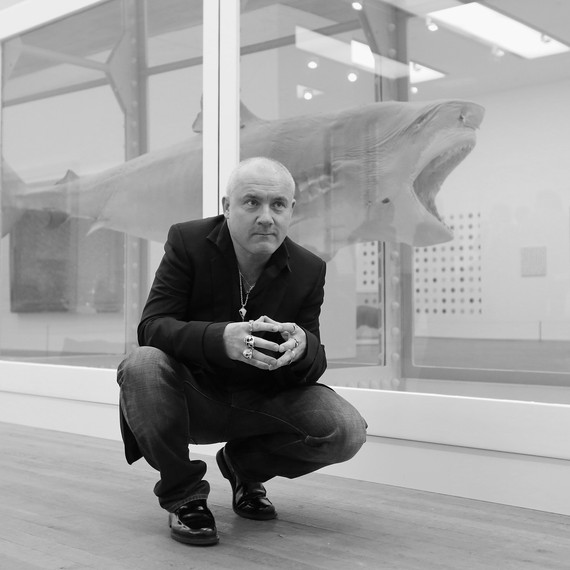
Photo: Oli Scarff/Getty Images
#DamienHirst
Website
Exhibitions
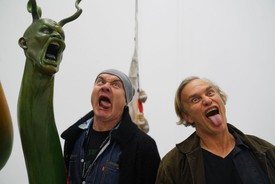
Truth Revealed: Damien Hirst and James Fox on Ashley Bickerton
In conversation with James Fox, Damien Hirst reflects on the artwork of his longtime friend.
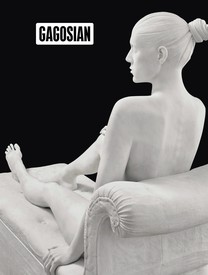
Now available
Gagosian Quarterly Fall 2021
The Fall 2021 issue of Gagosian Quarterly is now available, featuring Damien Hirst’s Reclining Woman (2011) on its cover.
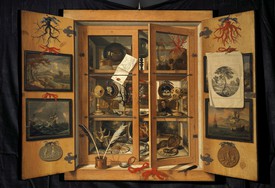
For Sale: Baby Shoes. Never Worn.
Sydney Stutterheim meditates on the power and possibilities of small-format artworks throughout time.
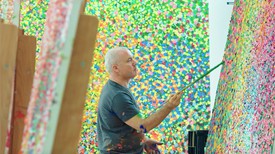
In the Studio: Damien Hirst’s Veil Paintings
Damien Hirst speaks about his Veil paintings with Gagosian’s Alison McDonald. “I wanted to make paintings that were a celebration,” he says, “and that revealed something and obscured something at the same time.”
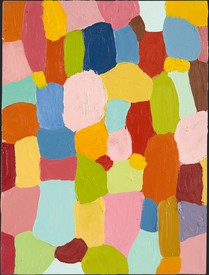
Damien Hirst: Visual Candy
James Fox considers the origins of Damien Hirst’s Visual Candy paintings on the occasion of a recent exhibition of these early works in Hong Kong.
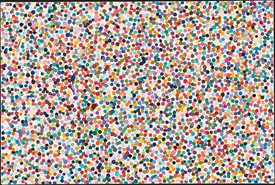
Damien Hirst: Colour Space Paintings
Blake Gopnik examines the artist’s “dot” paintings in relation to the history of representation in Western art, in which dabs of paint have served as fundamental units of depiction and markers of objective truth.
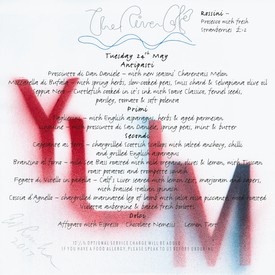
The River Café Cookbook
London’s River Café, a culinary mecca perched on a bend in the River Thames, celebrated its thirtieth anniversary in 2018. To celebrate this milestone and the publication of her cookbook River Café London, cofounder Ruth Rogers sat down with Derek Blasberg to discuss the famed restaurant’s allure.
Visions of the Self: Jenny Saville on Rembrandt
Jenny Saville reveals the process behind her new self-portrait, painted in response to Rembrandt’s masterpiece Self-Portrait with Two Circles.
Fairs, Events & Announcements
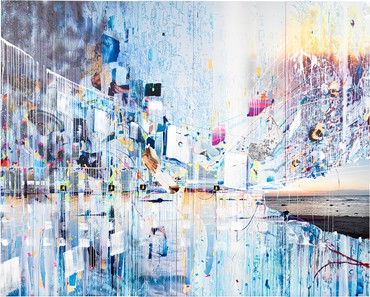
Art Fair
Art Basel Hong Kong 2024
March 27–30, 2024
Hong Kong Convention and Exhibition Centre
www.artbasel.com
Gagosian is participating in Art Basel Hong Kong 2024 with a selection of works by international contemporary artists. The works on view, which embrace a dizzying variety of subjects and approaches, see the participating artists identify fresh ways to disrupt established histories of abstraction and figuration, and instill sculptural and painterly representations of the natural world with complex cultural significance.
Sarah Sze, Turning and Turning, 2024 © Sarah Sze. Photo: Maris Hutchinson
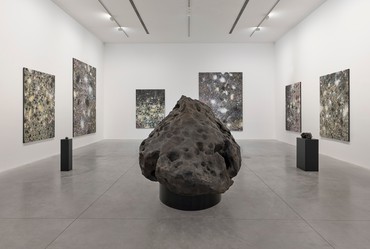
Exhibition
Damien Hirst
The Light That Shines
March 2–June 23, 2024
Château La Coste, Le Puy-Sainte-Réparade, France
chateau-la-coste.com
Damien Hirst takes over the entire estate at Château La Coste, filling its 500 acres and five exhibition pavilions, designed by world-renowned architects such as Oscar Niemeyer, Renzo Piano, and Richard Rogers, with sculptures and paintings from some of his most iconic series. The presentation also features work that has never been exhibited before, including The Empress Paintings, Cosmos Paintings, and sculptures from his Meteorites and Satellites series. A selection of outdoor sculptures are sited across the estate, including at Frank Gehry’s Music Pavilion and the Tadao Ando Art Centre, in addition to artwork inside the pavilions.
Installation view, Damien Hirst: The Light That Shines, Château La Coste, Le Puy-Sainte-Réparade, France, March 2–June 23, 2024. Artwork © Damien Hirst and Science Ltd. All rights reserved, DACS 2024. Photo: Prudence Cuming Associates Ltd
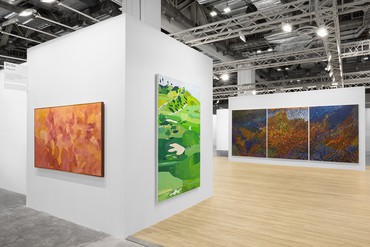
Art Fair
ART SG 2024
January 19–21, 2024, booth BC06
Marina Bay Sands Expo and Convention Centre, Singapore
artsg.com
Gagosian is pleased to participate in the second edition of ART SG, with a selection of works by international contemporary artists including Harold Ancart, Georg Baselitz, Ashley Bickerton, Amoako Boafo, Dan Colen, Edmund de Waal, Nan Goldin, Lauren Halsey, Hao Liang, Keith Haring, Damien Hirst, Tetsuya Ishida, Alex Israel, Donald Judd, Y.Z. Kami, Emily Kame Kngwarreye, Rick Lowe, Takashi Murakami, Takashi Murakami & Virgil Abloh, Nam June Paik, Ed Ruscha, Jim Shaw, Alexandria Smith, Spencer Sweeney, Stanley Whitney, Jonas Wood, and Zeng Fanzhi. The works on view, which embrace a wide variety of subjects and approaches, find artists infusing traditional genres such as history painting, portraiture, and landscape with new and surprising ideas that traverse cultural and temporal boundaries.
Gagosian’s booth at ART SG 2024. Artwork, left to right: © ADAGP, Paris, 2024, © Jonas Wood, © Rick Lowe Studio. Photo: Ringo Cheung
Museum Exhibitions
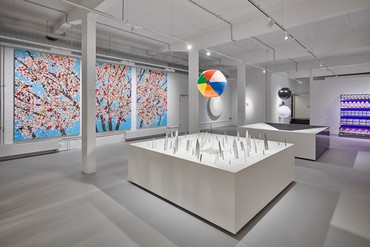
On View
Damien Hirst
The Weight of Things
Open from October 26, 2023
Museum of Urban and Contemporary Art, Munich
www.muca.eu
The Weight of Things—the first major survey of Damien Hirst’s work in Germany—presented by the Museum of Urban and Contemporary Art (MUCA), Munich spans forty years of the artist’s career. The exhibition features over forty installations, sculptures, and paintings, some of which have never been seen before, as well as work from his most iconic series, including Natural History, Spin Paintings, Medicine Cabinets, Treasures from the Wreck of the Unbelievable, and more.
Installation view, Damien Hirst: The Weight of Things, Museum of Urban and Contemporary Art, Munich, open from October 26, 2023. Artwork © Damien Hirst and Science Ltd. All rights reserved, DACS 2023. Photo: Prudence Cuming Associates Ltd
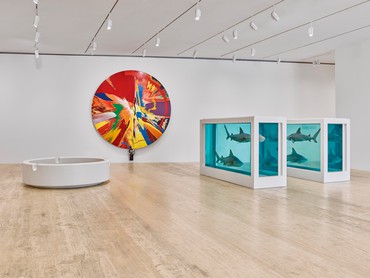
On View
Damien Hirst
Vivir Para Siempre (Por Un Momento)
Through August 25, 2024
Museo Jumex, Mexico City
www.fundacionjumex.org
This exhibition, whose title translates as To Live Forever (For a While), provides a comprehensive overview of Damien Hirst’s work between 1986 and 2019. Curated by Ann Gallagher in close collaboration with the artist, it features around sixty works including some of Hirst’s most iconic series, such as Natural History, Spin Paintings, Medicine Cabinets, and Cherry Blossoms.
Installation view, Damien Hirst: Vivir Para Siempre (Por Un Momento), Museo Jumex, Mexico City, March 23–August 25, 2024. Artwork © Damien Hirst and Science Ltd. All rights reserved, DACS 2024. Photo: Prudence Cuming Associates Ltd © Damien Hirst and Science Ltd. All rights reserved, DACS 2024
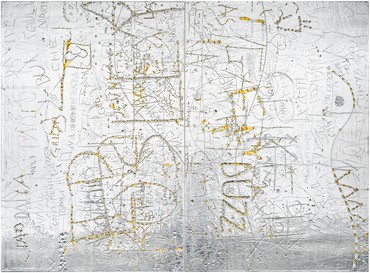
Closed
Colección Jumex
Todo Se Vuelve Más Ligero
November 18, 2023–February 11, 2024
Museo Jumex, Mexico City
www.fundacionjumex.org
To celebrate its tenth anniversary, Museo Jumex has invited Lisa Phillips, director of the New Museum, New York, to curate an exhibition drawn entirely from the Jumex collection and occupying the whole building. Featuring work by more than seventy international artists, the exhibition, whose title translates to Everything Gets Lighter, brings together diverse works in a poetic meditation on the meaning of light and manifestations of lightness. Work by Damien Hirst, Steven Parrino, Ed Ruscha, and Rudolf Stingel is included.
Rudolf Stingel, Untitled, 2001–02, Museo Jumex, Mexico City © Rudolf Stingel
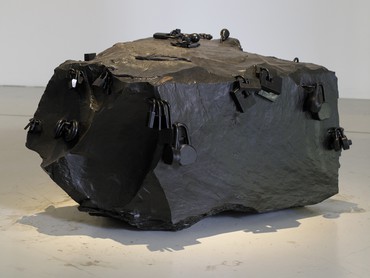
Closed
Storie di pietra
October 13, 2023–January 14, 2024
Villa Medici–Académie de France à Rome
www.villamedici.it
This exhibition, whose title translates to Stories of Stones, brings together nearly two hundred works, from the oldest terrestrial mineral dating back 4.4 billion years to the latest mineral, Sentimentite, created by contemporary artist Agnieszka Kurant. The exhibition explores the idea that stones have inspired artists from all eras. Work by Damien Hirst, Henry Moore, Giuseppe Penone, Pablo Picasso, and Tatiana Trouvé is included.
Tatiana Trouvé, Rock, 2007 © Tatiana Trouvé. Photo: Philippe Migeat
